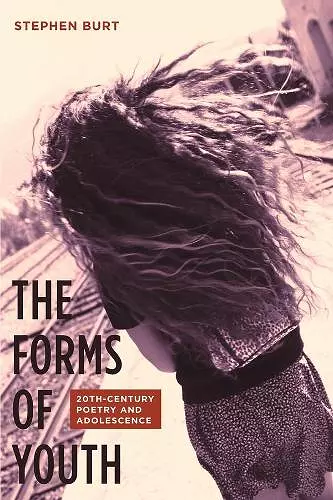The Forms of Youth
Twentieth-Century Poetry and Adolescence
Format:Hardback
Publisher:Columbia University Press
Published:11th Sep '07
Currently unavailable, and unfortunately no date known when it will be back

A major achievement by one of the most ardent poet-critics of the moment. Stephen Burt hears poems the way a poet hears poems, but this book is not a collection of scrapings from around the work-bench: it is a wide-ranging, fully modulated argument about the ways in which poetic language has registered the cultural phenomenon of adolescence. Like its subject, the book is big, surprising, and wonderfully inevitable. -- James Longenbach, Joseph H. Gilmore Professor of English, University of Rochester
Demonstrates how adolescence supplied the inspiration, and at times the formal principles, on which many twentieth-century poets founded their works. This book recasts the history of how English-speaking cultures began to view this phase of life as a valuable state of consciousness, if not the very essence of a Western identity.Early in the twentieth century, Americans and other English-speaking nations began to regard adolescence as a separate phase of life. Associated with uncertainty, inwardness, instability, and sexual energy, adolescence acquired its own tastes, habits, subcultures, slang, economic interests, and art forms. This new idea of adolescence became the driving force behind some of the modern era's most original poetry. Stephen Burt demonstrates how adolescence supplied the inspiration, and at times the formal principles, on which many twentieth-century poets founded their works. William Carlos Williams and his contemporaries fashioned their American verse in response to the idealization of new kinds of youth in the 1910s and 1920s. W. H. Auden's early work, Philip Larkin's verse, Thom Gunn's transatlantic poetry, and Basil Bunting's late-modernist masterpiece, Briggflatts, all track the development of adolescence in Britain as it moved from the private space of elite schools to the urban public space of sixties subcultures. The diversity of American poetry from the Second World War to the end of the sixties illuminates poets' reactions to the idea that teenagers, juvenile delinquents, hippies, and student radicals might, for better or worse, transform the nation. George Oppen, Gwendolyn Brooks, and Robert Lowell in particular built and rebuilt their sixties styles in reaction to changing concepts of youth. Contemporary poets continue to fashion new ideas of youth. Laura Kasischke and Jorie Graham focus on the discoveries of a specifically female adolescence. The Irish poet Paul Muldoon and the Australian poet John Tranter use teenage perspectives to represent a postmodernist uncertainty. Other poets have rejected traditional and modern ideas of adolescence, preferring instead to view this age as a reflection of the uncertainties and restricted tastes of the way we live now. The first comprehensive study of adolescence in twentieth-century poetry, The Forms of Youth recasts the history of how English-speaking cultures began to view this phase of life as a valuable state of consciousness, if not the very essence of a Western identity.
[A] compelling study. -- Richard Flynn H-Youth [A] wide-ranging, illuminating study... Recommended. Choice A remarkable achievement of of analytical and evaluative literary history that will suspend the expectations and ultimately redirect the attention of those who read it. -- Matthew Hofer Contemporary Literature
ISBN: 9780231141420
Dimensions: unknown
Weight: unknown
280 pages